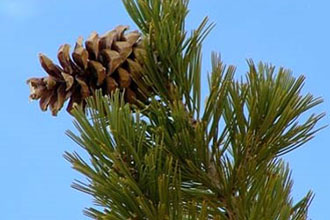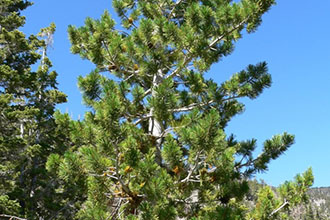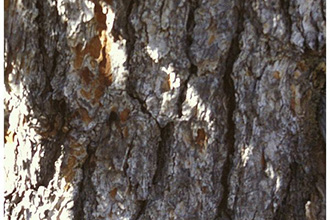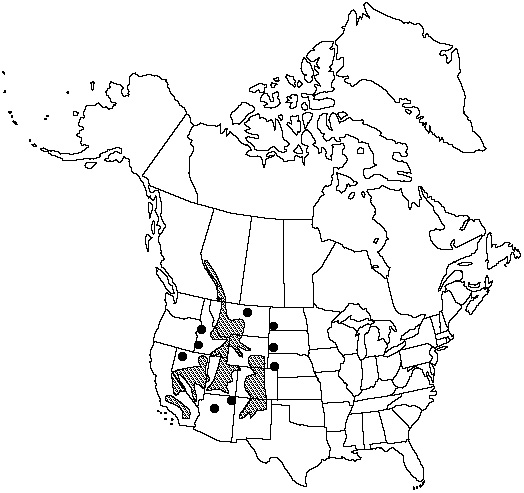Taxonomy: Kingdom - Plantae (plants). Subkingdom - Tracheobionta (vascular plants). Superdivision - Spermatophyta (seed plants). Division - Coniferophyta (conifers). Class - Pinopsida. Order - Pinales. Family - Pinaceae (pine). Genus - Pinus L. Species - Pinus flexilis James
Ecology: Limber pine is a slow growing, long-lived species, sometimes taking several hundred years to reach maturity. Mature trees may exceed 1000 years of age. Limber pine stands are broadly even-aged, though populations also occur in uneven-aged stands and on very harsh sites as widely spaced, isolated individuals. Trees often have an irregular or multi-stem growth form, and rarely reach over 15 m. At high elevations they sometimes form krummholz. Trunks may reach 2 m in diameter. The species is cold and drought tolerant. Trees are ectomycorrhizal, have deep taproots, and are very windfirm. Limber pine (and whitebark pine) are pioneering species that are either seral or topoedaphic climax species under different environmental conditions. In fact, seed dispersal by Clark's nutcrackers to outlying sites, treeline, and other harsh environments essentially increases the ecological niche breadth of these species. Clark's nutcrackers can maintain climax communities, colonize previously unforested sites, or initiate succession. The later stages of succession in xeric subalpine forests vary due to differences in sites and seed availability.



